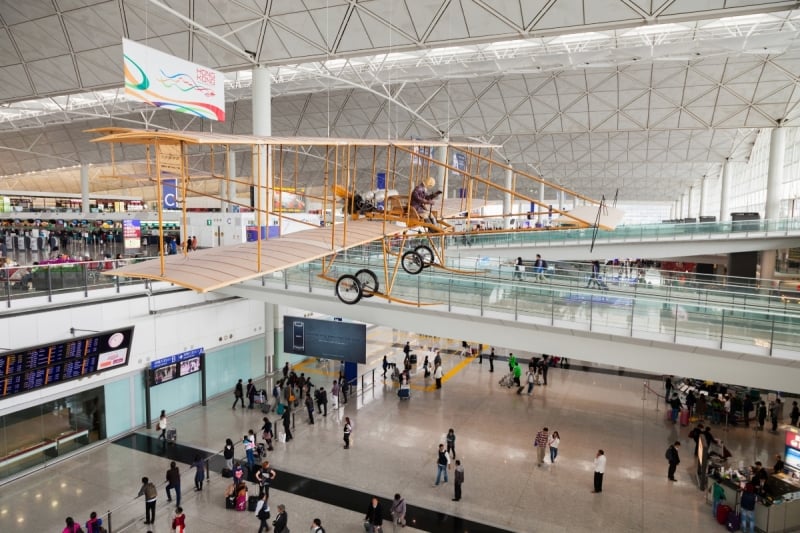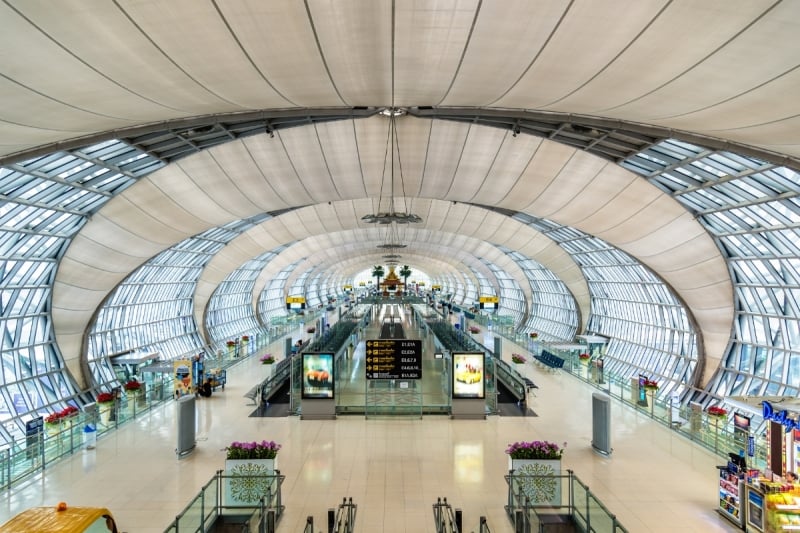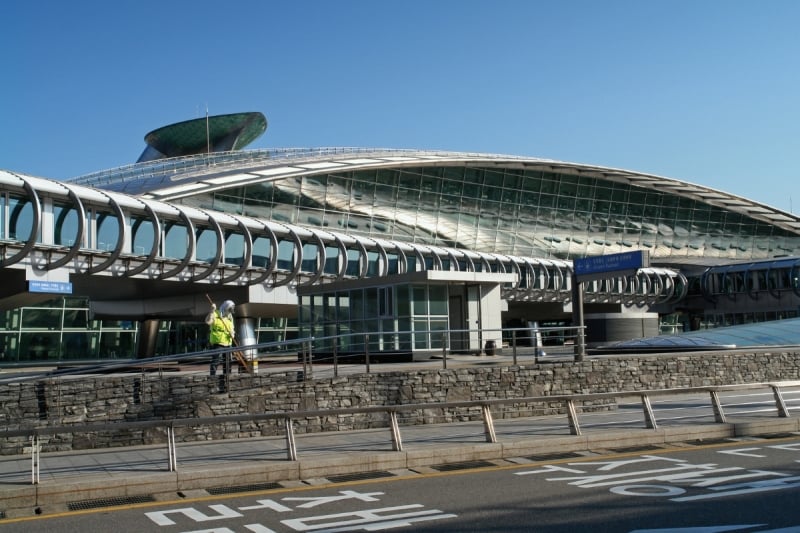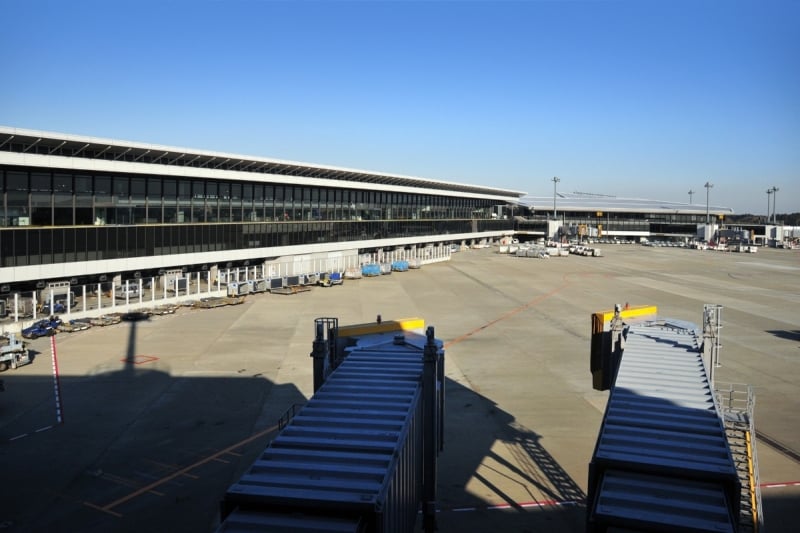Air travel is evolving fast, and airports are becoming destinations in their own right. From futuristic terminals to high-tech lounges and smarter baggage systems, the upgrades coming in 2026 promise journeys that are faster, smoother, and more enjoyable than ever. Here’s a roundup of some of the biggest airport transformations that travellers should watch.
Also read: 8 Best Airports for Layovers
The jewel of Asia, Singapore’s Changi Airport

Image credit: Nirut Sangkeow via Canva Pro
Changi Airport, Singapore, has long been the benchmark for airport excellence, and its ongoing expansion takes that reputation even further. Terminal 5, scheduled to open in the next few years, will handle up to 50 million passengers annually and feature sprawling green spaces, multi-storey indoor gardens, and leisure areas that make waiting a pleasure rather than a chore.
Passengers can also look forward to cutting-edge automation across check-in, boarding, and baggage handling, making connections effortless. With ultra-modern lounges, boutique shopping, and world-class dining, Changi is setting the standard for what a seamless airport experience should feel like.
Hong Kong International Airport presents a high-tech hub

Image credit: Andrey via Canva Pro
Hong Kong International Airport is transforming to meet growing passenger demand, with Terminal 2 and SkyPier expansions leading the way. The upgrades are part of its Three‑Runway System project. A new phase of Terminal 2 opened in September 2025, introducing a modernised coach hall for buses and cross‑boundary transport connections. This expansion is designed to improve ground‑transport efficiency and prepare the airport for higher passenger volumes.
The wider redevelopment, including additional phases for Terminal 2, aims to enhance overall airport capacity and support smoother passenger flow in the coming years. With the completion of these upgrades, Hong Kong International Airport will be better equipped to handle growing traffic while maintaining its role as a major gateway in Asia.
Modernisation meets Thai hospitality at Suvarnabhumi Airport

Image credit: Leonid Andronov via Canva Pro
Suvarnabhumi Airport in Bangkok has recently completed some of its most significant upgrades in years. The new satellite terminal SAT‑1, opened in 2023, has increased passenger handling capacity from approximately 45 million to 60 million annually, easing congestion during peak travel periods. In late 2024, the airport’s third runway became operational, boosting flight‑handling capacity from 68 to 94 flights per hour.
Looking ahead, travellers can expect more changes over the next few years. Plans for a South Terminal and further expansions are in development, aimed at accommodating the continued growth in passenger and flight numbers. The upgrades aim to balance efficiency with a sense of place, giving travellers a taste of Thailand before they even leave the airport.
Increased efficiency at Incheon International Airport, Seoul

Image credit: narvikk via Canva Pro
Incheon International Airport recently completed the expansion of Terminal 2 at the end of 2024, raising its annual capacity from around 77 million to approximately 106 million passengers. This makes it one of the largest upgrades in South Korea in recent years.
Future expansion phases, including a potential third terminal and additional runways, are planned to accommodate continued growth in air traffic. For travellers, Incheon is positioning itself to provide smoother transit, increased flight options, and improved overall efficiency in 2025 and beyond.
Narita International Airport in Tokyo expands capacity

Image credit: mtcurado via Canva Pro
As of May 2025, construction began on a third runway (Runway C) at Narita International Airport, Tokyo. Alongside the runway extension, plans include extending the existing shorter runway (Runway B) by 1,000 metres and consolidating three existing passenger terminals into a single terminal.
Upon completion, targeted by 2029, Narita expects to increase its annual take‑off and landing capacity from around 300,000 to 500,000 movements. The expansion also includes upgrading passenger and cargo facilities, aiming to handle greater traffic while improving efficiency and passenger experience. Renovation work at Terminal 1’s central building is also underway, with part of the building and observation deck set to reopen in spring 2026, providing more comfort and convenience for travellers.
Parisian precision at Charles de Gaulle Airport

Image credit: stellalevi via Canva Pro
Paris Charles de Gaulle Airport has been steadily modernising its infrastructure, making it an airport to watch in 2025 and beyond. Terminal 1 reopened in late 2022 after a major renovation, with updated boarding halls, improved passenger flow, and expanded check‑in facilities designed to make journeys smoother. In 2024, parts of Terminal 2 were also brought back into full operation following upgrades to baggage‑handling systems, border‑control facilities, and lounge spaces.
Looking ahead, the airport is undertaking further improvements, including runway and taxiway rehabilitations, airside system upgrades, and initiatives to better connect trains with flights. These projects are aimed at increasing efficiency, comfort, and sustainability, making it worth monitoring for travellers flying through Paris over the next two years.
Sustainability redefined at Amsterdam Airport Schiphol

Image credit: sasasasa via Canva Pro
Schiphol Airport in Amsterdam is combining smart technology with sustainability to create a next-generation travel experience. As of 2025, Schiphol has partnered with a telecom specialist to trial a private 5G network, which is aimed at supporting real‑time safety systems, predictive maintenance, and more reliable digital services across the airport.
These upgrades suggest Schiphol is focusing on behind‑the-scenes improvements to support smoother operations, from baggage handling and security to flight coordination, enhancements that may not be immediately visible to passengers, but still contribute to a more reliable airport experience.
Why these upgrades matter for travellers
Recent and upcoming upgrades at airports across the globe will help reduce crowding, improve passenger flow, and create more flight options. Even when some improvements happen behind the scenes, such as new runways or upgraded operations systems, they can have a noticeable impact on travel reliability and comfort.
For travellers planning trips in 2025 and 2026, keeping an eye on these airports can make a difference. These developments signal a smoother, more efficient, and increasingly seamless airport experience.
Also read: Zayed International Airport Named the World’s Most Beautiful Airport
Looking ahead
The coming years promise a golden age of airport experiences. Whether it’s Singapore’s futuristic Changi, Bangkok’s hospitable hub, or Europe’s revamped gateways, travel is set to become faster, smoother, and more enjoyable than ever before. With these upgrades, besides being mere points of transit, airports are spaces where comfort, efficiency, and style converge. For frequent flyers and occasional travellers alike, the journey is about to get just as memorable as the destination.




